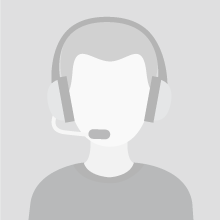Looking from the outside it seems that it couldn't be any easier to become a tour guide. It is enough to learn some story about historical events in a specific place or about the architectural features of buildings on a particular route and you can successfully do this work. However, to become a real professional you’ll need a lot more.

Are you ready to work with a smile rain or shine?
What should you learn?
- History and science of culture. Without having extensive knowledge of these areas, the guide’s answers to the tourist's questions are scarce, and there is no improvisation during the tour. Clients quickly feel bored.
- Rhetoric. Tourists are interested in listening to someone who does not just speak with well-learned phrases but speaks with emotion, and emphasis, and plays with tones. So, here you cannot do without proper articulation and a trained voice.
- Psychology. It is useful when working with a group: hold the attention of a mixed company, extinguish arising conflicts, and try to make concerted efforts. You’ll need these skills even in personal tours to correctly identify the tourist’s preferences and to give the information which would be interesting for him or her.
- Logistics. The basics of this science are required for making optimal routes. These are especially important in preparing sightseeing tours when in a short time you need to visit many attractions.

When making a route you must take into account many factors
The tour guide needs good health to go hiking every day in all weather. Also he or she needs an ability to handle stress, since facing different people, including whimsical and outrageous persons.
A guide should tighten up specific skills: spectacular showing of objects and exhibits, emotionally charged story, successful work with the audience, etc. To do this one needs to exercise several times, first in educational situations and then in real ones. How you can get such training?
3 ways of mastering the profession
- In educational institutions.
Specialists for designing and conducting tours are trained in colleges, technical institutes, and tourism institutes, as well as in the geography department of the Universities. This way is suitable for school leavers who wish to receive both the profession and the diploma of higher education. The disadvantages of this way include the duration of the study and the presence in the program of some subjects, which will not be useful for future work (but you need to spend time on these). The advantage is the fundamental character of this education, allowing in the future to open an office, and not only to conduct tours.
- In the specialized courses.
The advantage of this method is that here you get only what you need for your work: you’ll learn the basics of rhetoric, logistics, and psychology and know how to make routes, show exhibits, communicate within the etiquette rules, etc. And still, you’ll be told how to advertise your services: via printed media, a site for guides and tourists, with the help of business cards and recommendations.
Another advantage of the courses is a short training period (2-3 months). Their students have time both to learn theory and tighten up practical skills. And in the end, they get certificates that they can safely show to customers.
Courses are suitable for those who have already found their "niche", have knowledge in some area, and are ready to share it with others. These are people with a profession of historian, literary critic, architect, or enthusiastic researcher of the native land.

Students can hone their guide skills on each other
- On your own.
This way is effective for very few people. Only people who are able to gather information and prepare the curricula, as well as have enough willpower to follow these, can successfully master the profession without the help of experienced professionals. But it’s hard to say how long it takes. Still, the practical skills need to be honed on real clients. It is unlikely that the first attempts will be successful, and this will affect not in the best way the reputation of the guide.
The success formula, apparently, consists of combined professional training and independent activities. The latter includes extending the knowledge on the topics of excursions, making new routes, and so forth. That is the way to become a guide which will be recommended by tourists to their friends and acquaintances.
Read our previous article Guide self-education tools
Read our next article Sundarbans: Home of the Royal Bengal Tiger










